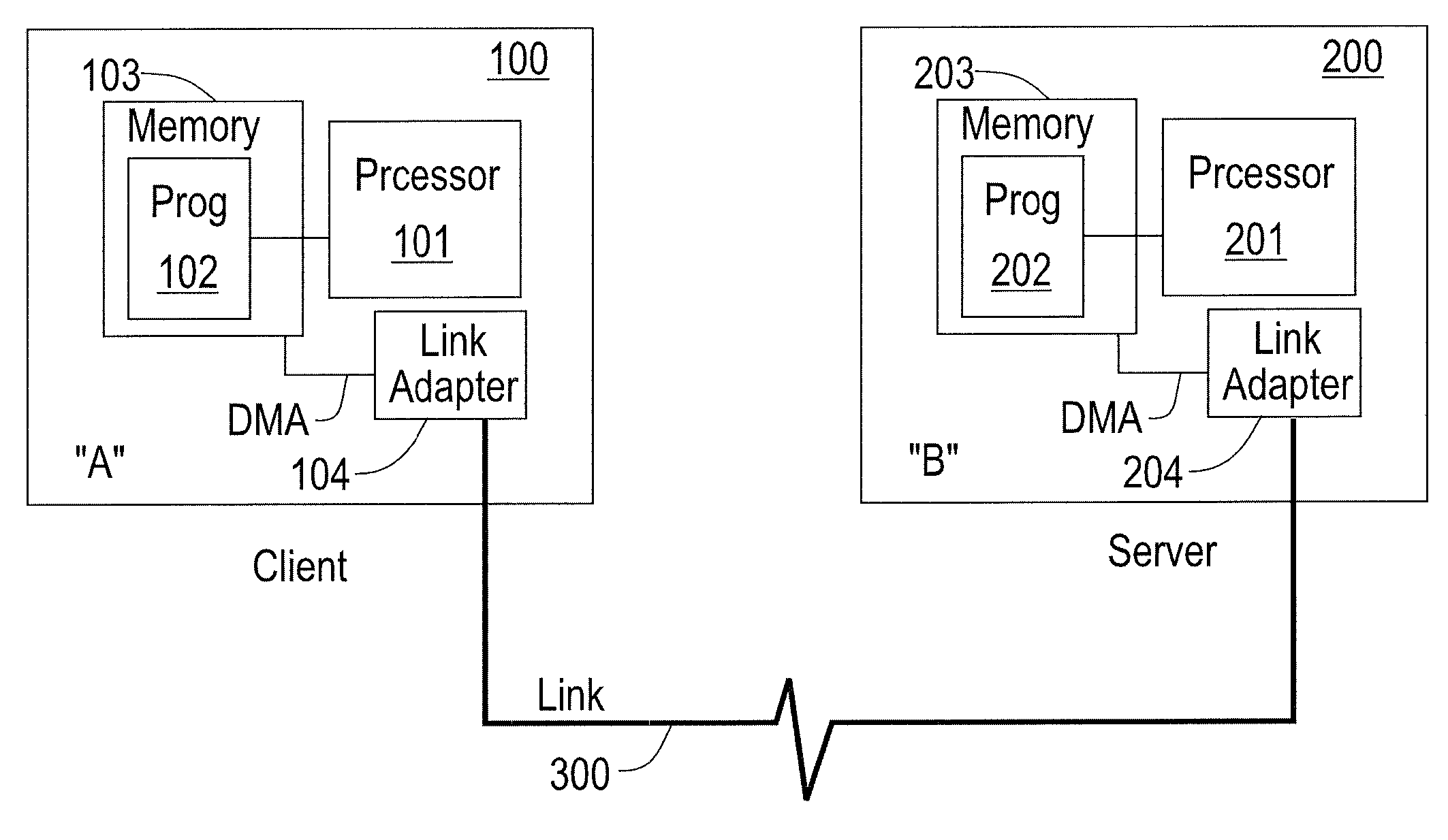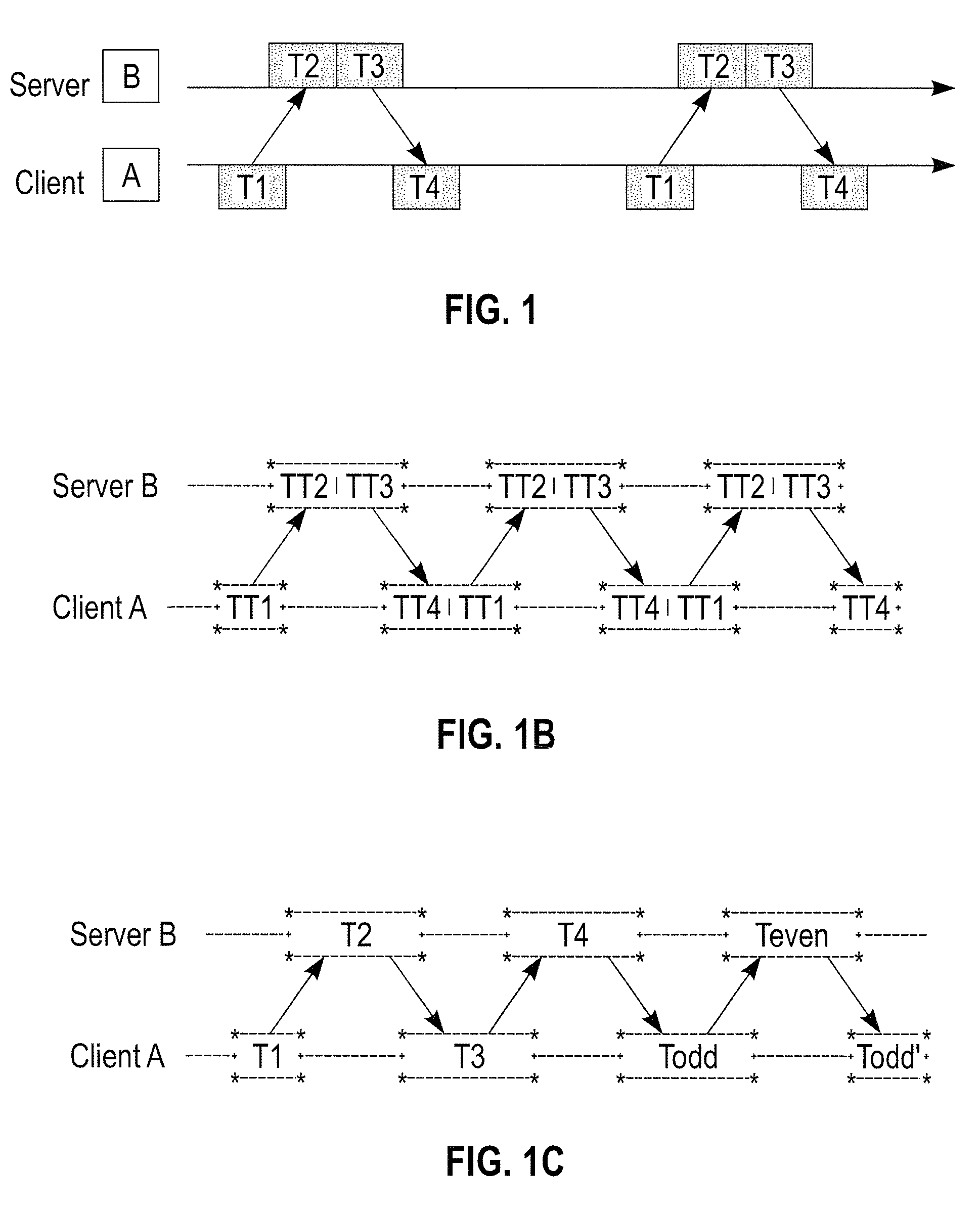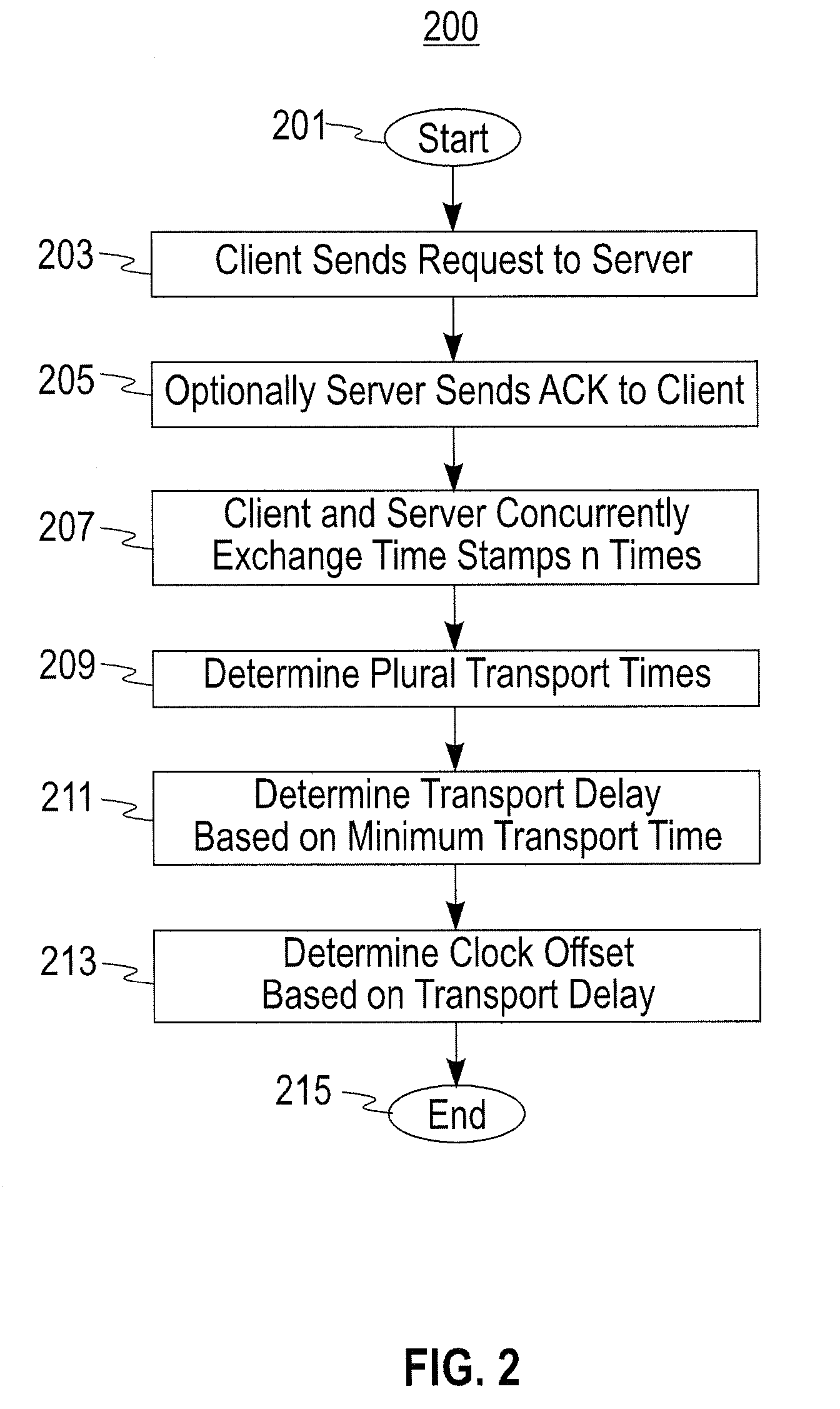Robust Jitter-Free Remote Clock Offset Measuring Method
a remote clock offset and measurement method technology, applied in the field of remote clock offset measurement methods and apparatuses, can solve the problems of limiting accuracy to 10 microseconds or worse, software-only solutions to clock synchronization, and affecting the accuracy of the clock,
- Summary
- Abstract
- Description
- Claims
- Application Information
AI Technical Summary
Benefits of technology
Problems solved by technology
Method used
Image
Examples
Embodiment Construction
[0017]Briefly, a clock offset between a client and a server is measured as follows:
[0018](a) the client sends a request for a “pingpong exchanger” to the server (who is waiting for this request passively, i.e. not consuming resources).
[0019](b) upon receiving the request of step (a), the server optionally sends an acknowledgement to the client (who is also waiting passively, if this step is used). Whether or not an acknowledgement is sent, the server enters an active wait loop for the client's first pingpong packet.
[0020](c) upon the client receiving the acknowledgement of step (b), or immediately after step (a) if step (b) did not involve an acknowledgement, the client starts the pingpong exchange by sending the first pingpong packet to the server and then waiting actively for a reply. Both client and server perform an agreed-upon number of pingpong exchanges. Each pingpong packet includes at least the timestamp at which it was sent.
[0021](d) The apparent forwards and backwards del...
PUM
 Login to View More
Login to View More Abstract
Description
Claims
Application Information
 Login to View More
Login to View More - R&D
- Intellectual Property
- Life Sciences
- Materials
- Tech Scout
- Unparalleled Data Quality
- Higher Quality Content
- 60% Fewer Hallucinations
Browse by: Latest US Patents, China's latest patents, Technical Efficacy Thesaurus, Application Domain, Technology Topic, Popular Technical Reports.
© 2025 PatSnap. All rights reserved.Legal|Privacy policy|Modern Slavery Act Transparency Statement|Sitemap|About US| Contact US: help@patsnap.com



